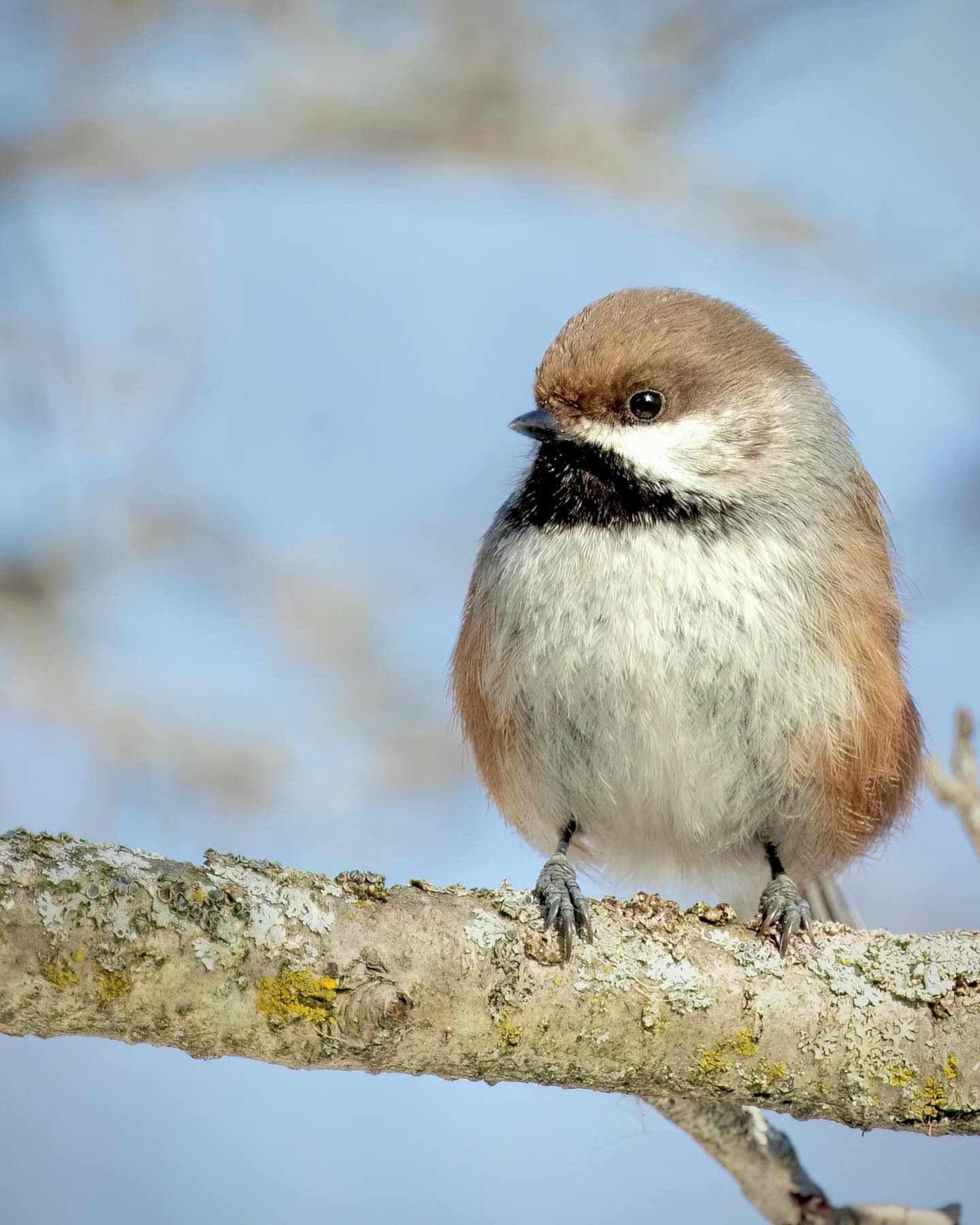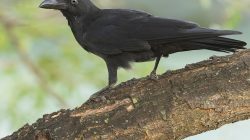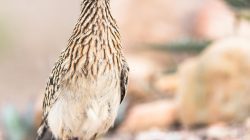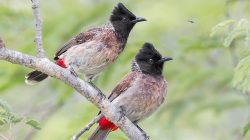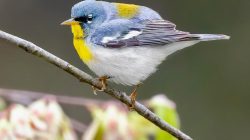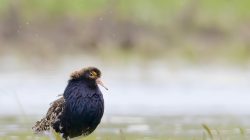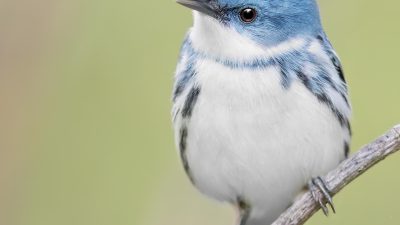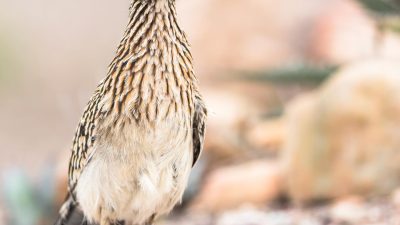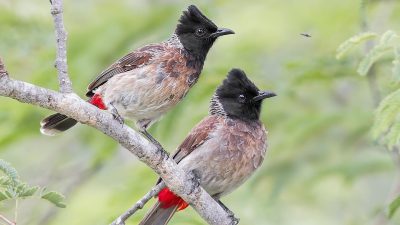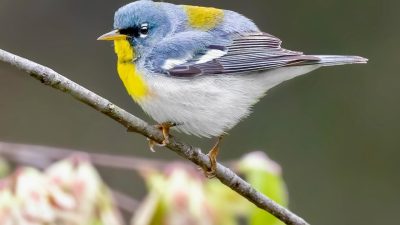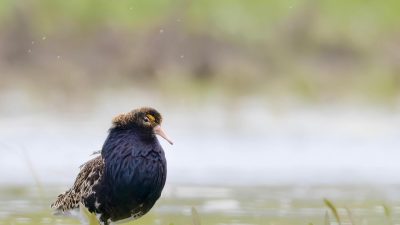The Boreal Chickadee (Poecile hudsonicus): A Detailed Exploration
Diajar.net – The Boreal Chickadee (Poecile hudsonicus) is a small, non-migratory songbird that belongs to the Paridae family. Known for its distinctive black cap, white cheeks, and a slightly larger, stockier build than its cousin, the Black-capped Chickadee, this bird has captured the fascination of birdwatchers and ornithologists alike. In this article, we will explore the Boreal Chickadee in great detail, from its origin and name to its habits, diet, and conservation status. Let’s delve into each aspect of this unique bird’s life.
Origin of the Animal Name
The scientific name of the Boreal Chickadee, Poecile hudsonicus, carries significant meaning that reflects both its appearance and geographic origins.
- Genus Poecile: The genus name “Poecile” is derived from the Greek word poikilos, which means “variegated” or “mottled.” This name references the bird’s varied plumage, which consists of shades of gray, white, and brown.
- Species Name hudsonicus: The species name hudsonicus comes from Hudson Bay, an area in northeastern Canada. This reflects the bird’s primary distribution and ties its name to the region’s historical significance in the early exploration and mapping of North America.
The common name “Boreal Chickadee” refers to its habitat in the boreal forests of North America, underscoring its preference for cold, northern environments.
Appearance
The Boreal Chickadee is a relatively small bird, measuring between 10-12 cm (4-4.5 inches) in length and weighing approximately 9-12 grams. Its physical features are key to its identification.
- Plumage: The bird has a mostly brownish-gray back, with a lighter gray belly. Its head is capped with a dark black or dark brown coloration, which contrasts sharply with the white cheeks and throat.
- Facial Markings: One of the key identifiers of the Boreal Chickadee is its dark cap that extends down the nape of the neck, paired with the white cheeks, creating a distinct mask-like appearance.
- Eyes: The Boreal Chickadee’s eyes are dark and beady, contributing to its alert and curious expression.
- Size and Shape: Slightly stockier and bulkier than other chickadee species, the Boreal Chickadee has a round, compact body shape and short, stout bill, which is characteristic of many members of the Paridae family.
- Feathers and Texture: The feathers of the Boreal Chickadee are relatively soft, offering a muted yet distinct look, especially in contrast to the vibrant plumage of other bird species.
Overall, the Boreal Chickadee is visually distinctive within the chickadee family, with a more subtle and muted color palette compared to the brighter Black-capped Chickadee.
Distribution
The Boreal Chickadee is primarily found in the northern regions of North America. Its range spans across the boreal forests of Canada and parts of Alaska, extending into the northern reaches of the United States.
- Canada: In Canada, it is found in the dense coniferous forests that stretch from British Columbia in the west to Newfoundland and Labrador in the east. It also occurs in the subarctic regions of the Yukon and northern Quebec.
- United States: The Boreal Chickadee’s presence in the United States is more limited, with sightings mainly in the northern parts of the country, including the northernmost states like Alaska, Minnesota, and parts of the Great Lakes region.
The bird prefers dense, evergreen forests with an abundance of spruce, fir, and pine trees. These environments provide essential food sources and nesting sites for the Boreal Chickadee, which thrives in the cold, rugged northern habitats.
Geography
The Boreal Chickadee is closely tied to the geography of the boreal forest biome, one of the largest ecosystems on Earth. This biome stretches across the northern hemisphere, from North America to northern Eurasia, and is characterized by cold temperatures and long winters.
- North America’s Boreal Forest: The Boreal Chickadee’s primary habitat is in the boreal forests of Canada, which covers much of the country’s northern expanse. This forest is largely composed of coniferous trees like spruces, firs, and pines, as well as a mix of deciduous species in some areas.
- Alaska and Yukon: In Alaska and the Yukon, the Boreal Chickadee is found in the expansive taiga forests, where it can take shelter in trees that have adapted to cold, nutrient-poor soils. These regions experience long winters with extremely cold temperatures, making the Boreal Chickadee a hardy species.
- Elevation and Climate: The Boreal Chickadee can also be found in high-elevation forests, especially in areas where conditions mimic the subarctic environment. This bird is well-adapted to surviving harsh winters, relying on the dense coniferous cover to shield it from wind and snow.
Thus, the Boreal Chickadee’s geography is inextricably linked to the northern forests of North America, where it flourishes in cold climates and dense tree cover.
Habits and Lifestyle
The Boreal Chickadee is known for its active and inquisitive nature, a trait common among chickadees. It is a year-round resident in its range, meaning it does not migrate like some other birds. This non-migratory lifestyle is largely due to its ability to cope with the cold temperatures and limited food resources during winter.
- Social Behavior: Boreal Chickadees are generally social birds, often seen in small mixed-species flocks with other songbirds such as the Black-capped Chickadee, nuthatches, and woodpeckers. During the winter months, they engage in cooperative foraging and roosting, helping each other locate food and maintain warmth.
- Communication: Like other chickadees, the Boreal Chickadee uses a variety of vocalizations, including its characteristic “chick-a-dee-dee-dee” call. This call serves multiple functions, including communication within flocks and alerts to potential threats from predators.
- Roosting and Nesting: The Boreal Chickadee is known for using tree cavities or abandoned woodpecker holes for nesting. It often chooses spots that are well-protected from the elements, such as in the hollow trunks of dead trees, where it can stay warm during harsh winters. The bird is also known to cache food for the winter months, hiding seeds in crevices or under bark to consume later.
Diet and Nutrition
The diet of the Boreal Chickadee consists primarily of insects, seeds, and berries. Being omnivorous, it is opportunistic in its feeding habits, adjusting its diet based on the availability of food in its environment.
- Insects: During the warmer months, the Boreal Chickadee feeds extensively on insects, including beetles, ants, caterpillars, and moths. It forages through the branches and leaves of trees, using its sharp beak to extract insects from bark crevices.
- Seeds and Nuts: In addition to insects, seeds from conifers like pines, spruces, and firs are an essential part of the Boreal Chickadee’s diet. During the winter, these seeds provide the bird with much-needed energy to survive the cold months.
- Berries and Fruit: Boreal Chickadees also eat berries and small fruits, particularly those that grow on shrubs and low trees in the forest understory. These include blueberries, raspberries, and cranberries.
As a result of this varied diet, the Boreal Chickadee is able to survive year-round in its northern habitat, adapting to seasonal changes by relying on stored food and cached seeds during winter.
Population
The population of Boreal Chickadees is difficult to estimate precisely due to their remote habitat and the challenges of conducting comprehensive surveys in such expansive, forested regions. However, birdwatchers and ornithologists have observed that the species is generally widespread within its range.
- Stable Population: The Boreal Chickadee is not currently listed as a species of major conservation concern, with most estimates suggesting that its population is stable. The bird’s adaptability to a variety of forested habitats and its ability to thrive in cold conditions have contributed to its continued presence across its northern range.
- Factors Affecting Population: While the population of Boreal Chickadees is not experiencing drastic declines, changes in climate, habitat loss due to deforestation, and human encroachment in boreal regions may pose potential risks to future population stability.
Number of Populations
Though specific population numbers are elusive, the Boreal Chickadee is considered common in suitable habitats throughout its range. Research from various bird monitoring organizations indicates that the species is present in many of the remote forests of Canada and Alaska, with stable or increasing populations in some areas.
The bird’s non-migratory nature means that it tends to live in year-round, localized populations. These populations can range from small family groups to larger, mixed-species flocks during the winter months. Boreal Chickadees are generally not found in densely urbanized areas, preferring the solitude and isolation of the boreal forest.
Conservation
While the Boreal Chickadee does not currently face immediate threats to its population, ongoing conservation efforts are crucial to ensure its continued survival, especially as climate change and habitat loss threaten the stability of northern forests.
- Habitat Protection: Conservation groups and governments in Canada and the United States have worked to protect the boreal forest, which is a critical habitat for the Boreal Chickadee. Initiatives to preserve large tracts of forest, limit logging activities, and create protected national parks have been beneficial in maintaining stable populations of the species.
- Climate Change: As temperatures rise and the climate warms, the Boreal Chickadee’s habitat may shift or be reduced. Warmer temperatures can alter the structure of boreal forests, impacting the availability of food sources and suitable nesting sites. It is important for conservationists to monitor these changes and work to mitigate their effects.
- Conservation Status: The Boreal Chickadee is currently listed as a species of “Least Concern” by the International Union for Conservation of Nature (IUCN). However, its continued survival depends on the protection of its habitat and the health of the boreal forest ecosystem.
In conclusion, the Boreal Chickadee is a remarkable bird species that thrives in the harsh northern environments of North America. With its distinctive appearance, social behavior, and adaptability, it plays a crucial role in the ecology of boreal forests. Continued efforts to protect its habitat will ensure that future generations can enjoy the sight and sounds of this hardy, fascinating songbird.
